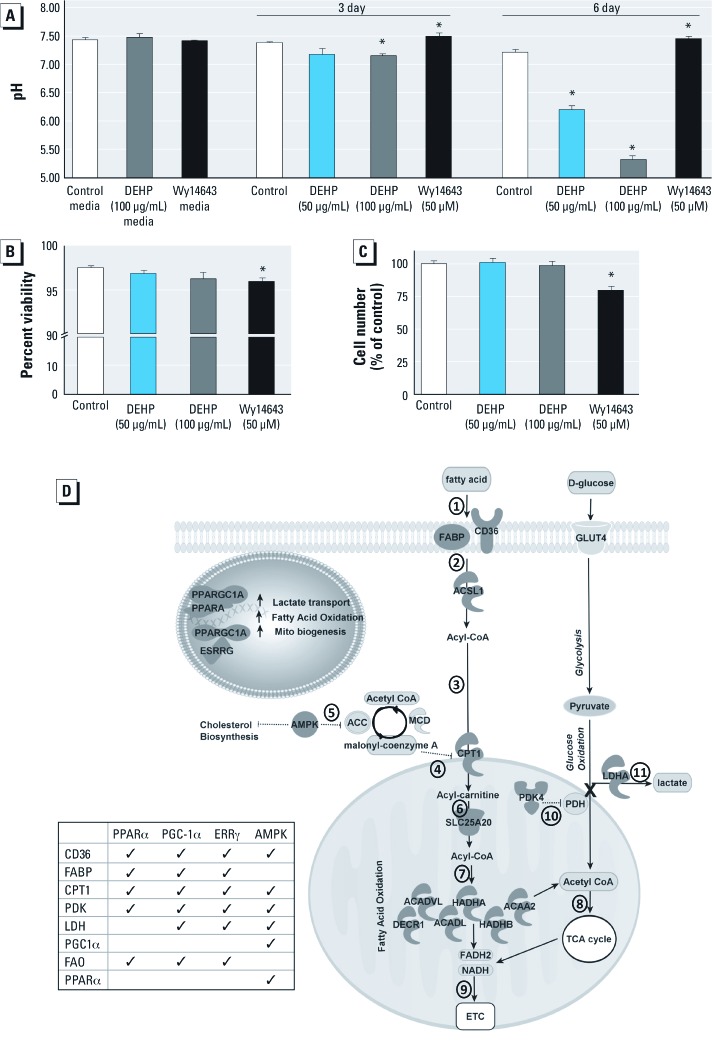Figure 6.
DEHP treatment resulted in proton accumulation (A,B,C), which is likely due to modifications in FA and glucose oxidation pathways (D). (A) pH measurements of media samples with chemical additives, either in the absence (media; left) or presence of cells (n = 3). (B,C) Decreased cell viability (2.5% of control; B) or reduction in cell number (20% of control; C) may explain pH changes in Wy-14643 samples but not DEHP samples; values are mean ± SE (n = 3 for each treatment). (D) DEHP treatment increased the expression of multiple genes in the FAO pathway, and inhibition of PDH via PDK4 expression caused lactate accumulation, as did an up‑regulation of LDH (LDHA). Common associations between metabolic regulators and FAO genes are shown; dark gray indicates genes significantly altered in DEHP samples compared with controls. Numbers indicate steps in the metabolism of FAs, described in “Discussion.” Phthalates can activate nuclear receptors (PPARα, estrogen related receptor gamma; ESRRG) and their coactivators (PGC-1α). PGC-1α and PPARα are associated with increased FAO, mitochondria (mito) biogenesis, and lactate transport. AMP-activated kinase (AMPK) activity can also increase FAO gene and PDK4 expression via PGC-1α and PPARα. *p < 0.05 compared with the control.

